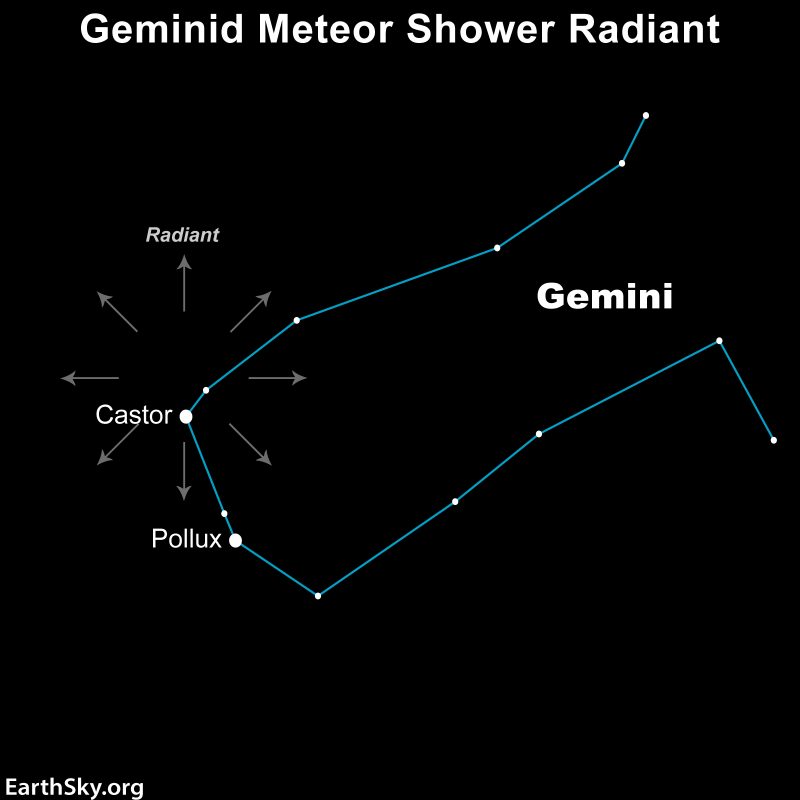Geminids December 2025

Early to mid-December meteors … the Geminids
Predicted peak: is predicted** for 3 UTC on December 14, 2025.
When to watch: Since the radiant rises in mid-evening, you can watch for Geminids all night on December 13-14. The days before and after might be good as well. A waning crescent moon will rise a few hours after midnight on December 14, so it won’t interfere with meteor watching. Plus, the bright planet Jupiter is nearby.
Overall duration of shower: November 19 to December 24. This time period is when we’re passing through the meteor stream in space!
Radiant: Rises in mid-evening, highest around 2 a.m. See chart below.
Nearest moon phase: In 2025, the last quarter moon falls at 20:52 UTC on December 11. So there will be a waning crescent moon rising several hours after midnight around the peak of the 2025 Geminid meteor shower and won’t interfere with Geminid meteors.
Expected meteors at peak, under ideal conditions: Under a dark sky with no moon, you might catch 120 Geminid meteors per hour.
Note: The bold, white, bright Geminids give us one of the Northern Hemisphere’s best showers, especially in years when there’s no moon. They’re also visible, at lower rates, from the Southern Hemisphere. The meteors are plentiful, rivaling the August Perseids.
